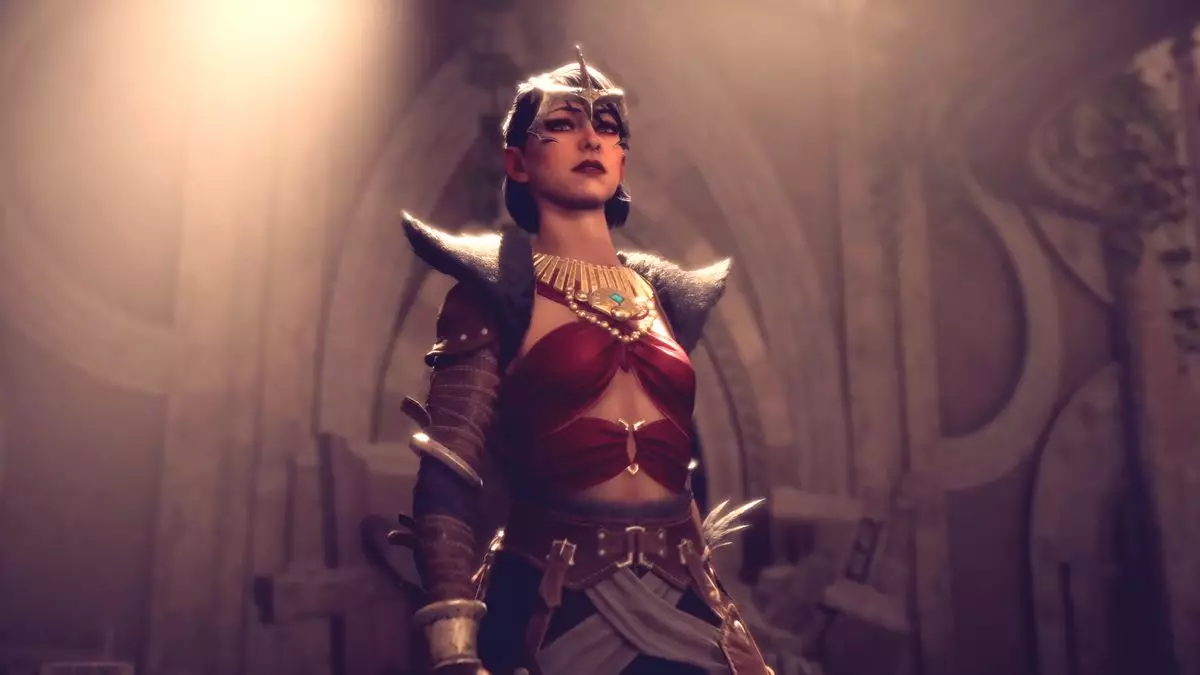David Gaider, a central figure in the creation of the beloved Dragon Age franchise, recently shared fascinating insights into the casting of Claudia Black as the voice of Morrigan, one of the series’ most iconic characters. The narrative designer’s revelations voice not only a nostalgic reflection on the development process but also highlight the unique paths that can lead to memorable artistic collaborations. This isn’t just a story about casting; it’s a window into the serendipitous nature of creativity in the gaming industry.
In Gaider’s recounting, Morrigan’s character design evolved from an amalgamation of mythological and literary influences. Initially inspired by Morgan le Fey and Delirium from Neil Gaiman’s Sandman, Morrigan was intended to be a complex figure embodying both cynicism and a desire for connection. This intricate preparation highlights the balancing act that creators often perform—striving to develop characters who resonate on emotional and thematic levels while remaining grounded in their narratives.
However, the road to finding the perfect voice for Morrigan was marked by unexpected challenges. Gaider reveals that the development team initially sought a Middle Eastern actress, with Shoreh Aghdashloo considered for the part. Unfortunately, when Aghdashloo withdrew due to other commitments, the developers faced a notable gap in their casting lineup. It’s an interesting reminder of how unpredictable the creative process can be, showcasing the often-overlooked hurdles that shape artistic endeavors.
At this pivotal moment, Claudia Black’s entry into the project was not typical at all. Instead of traditional audition materials, she submitted a voice recording in which she playfully performed a unique rendition of Sir Mix-a-Lot’s “Baby Got Back.” This peculiar choice, described humorously by Gaider, demonstrates the unpredictable but refreshing nature of artistic expression. Black’s bold submission shattered conventional expectations, and it was precisely this originality that captured Gaider’s attention and affection for her potential as Morrigan.
Despite initial resistance from higher-ups in the production hierarchy, Gaider’s enthusiasm for Black’s charismatic voice ultimately influenced the decision-making process. His candid appreciation for Black’s raspy voice—likening it to one that “smokes three packs a day”—reveals the authenticity that he sought out in character portrayal. This aspect of Gaider’s preference serves as a reminder that imperfections can often be the defining traits that resonate with audiences, enriching a character’s personality and relatability.
Once the team embraced Black’s natural approach to the character, it became clear that her performance would set Morrigan apart from initial designs. The contrarian nature of the situation—where the unconventional path led to success—underscores a broader lesson applicable not only in game development but also in creative industries at large: sometimes the best outcomes arise from relinquishing control and embracing unexpected artistry.
Gaider’s interactions with Black and their shared humor contributed to a camaraderie that transformed their working relationship into a lasting artistic legacy. His playful comparison of her to actress Helena Bonham Carter sparked a light-hearted rapport, showcasing the personal connections that can make collaboration enjoyable. In many ways, these moments of levity enrich the creative process by infusing it with warmth and facilitating open dialogue between artists.
Ultimately, Morrigan evolved into more than a character in a game; she became a “touchstone” for Gaider and a defining presence in *Dragon Age: Origins*. Reflecting on her growth, he illustrates how closely characters can mirror the passions and struggles of their creators. This depth is what has allowed Morrigan to resonate with fans long after the game’s initial release, becoming both a symbol of the franchise and an enduring figure in gaming history.
In essence, Claudia Black’s portrayal of Morrigan in the *Dragon Age* series represents an unexpected fusion of artistry, personality, and creative spontaneity. Her return in the latest installment, *Dragon Age: The Veilguard*, is a testament to the character’s lasting influence and to the power of unique vocals in elevating narrative experiences. The journey from a whimsical audition tape to a beloved character showcases the beauty of serendipitous artistry in gaming—a reminder that sometimes the roads less traveled yield the most memorable destinations.

